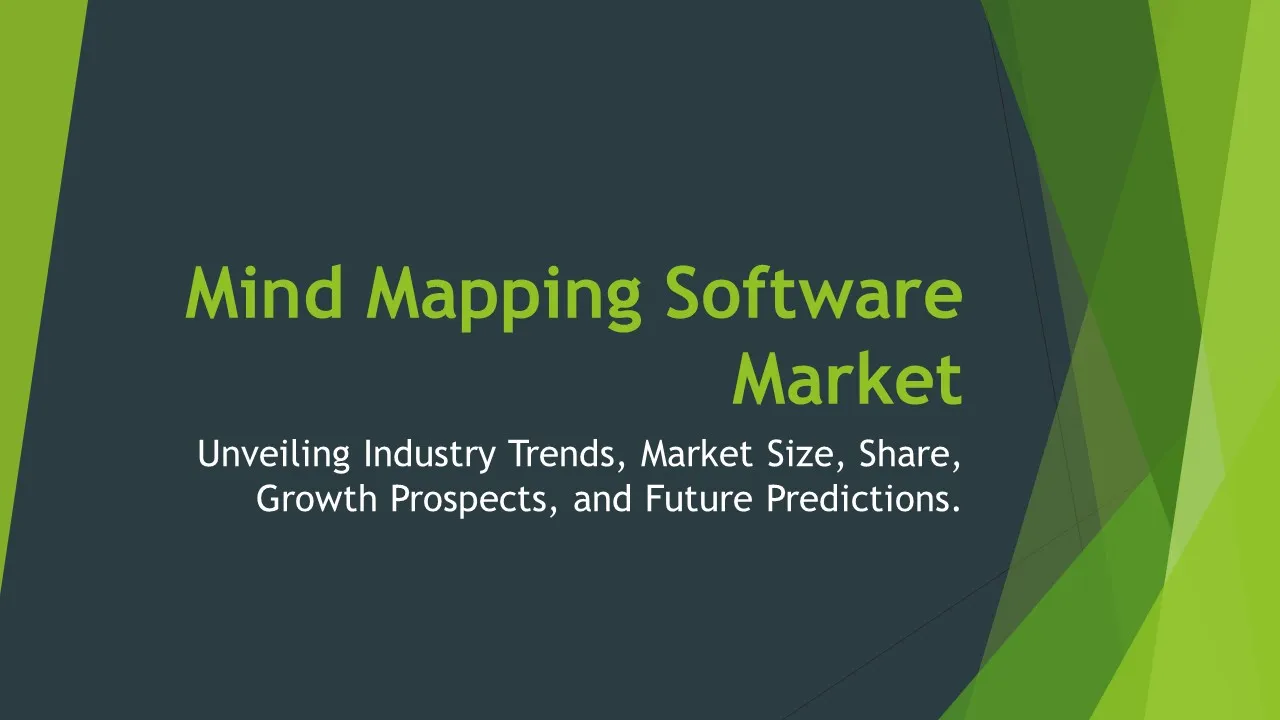Artificial Intelligence (AI) in Mining
AI in Mining Market Segments - by Technology (Machine Learning, Computer Vision, Natural Language Processing, Predictive Analytics, and Autonomous Equipment), Application (Exploration, Planning & Design, Production, Maintenance & Inspection, and Safety & Security), Mining Type (Surface Mining, Underground Mining), Deployment (Cloud-based AI, On-premise AI), and Region (North America, Europe, Asia Pacific, Latin America, Middle East & Africa) - Global Industry Analysis, Growth, Share, Size, Trends, and Forecast 2025-2035
- Report Preview
- Table Of Content
- Segments
- Methodology
Artificial Intelligence (AI) in Mining Market Outlook
The global AI in mining market was valued at approximately USD 2.5 billion in 2023 and is projected to reach USD 8.5 billion by 2035, growing at a CAGR of around 13.5% during the forecast period. The increasing adoption of advanced technologies such as machine learning and predictive analytics in mining operations is a primary growth factor driving this market. Additionally, the burgeoning demand for operational efficiency and safety in mining processes, coupled with the need for real-time data analysis, has positioned AI as a crucial component in modern mining practices. This transformation is characterized by the integration of AI systems that enhance decision-making and productivity, ultimately leading to improved resource management and cost savings. Furthermore, the growing focus on sustainable mining practices is encouraging companies to adopt AI solutions that minimize environmental impact, thus fostering market growth.
Growth Factor of the Market
One of the most significant growth factors for the AI in mining market is the continuous technological advancements in AI and machine learning, which enable mining companies to automate various processes, optimize resource extraction, and enhance predictive maintenance. These technologies not only improve operational efficiency but also lead to significant cost savings and reduced downtime. Additionally, the increasing focus on safety and compliance within the mining industry drives the need for AI applications that can monitor and mitigate risks effectively. The integration of IoT devices with AI applications allows for real-time data collection and analytics, which is crucial for making informed decisions in a dynamic mining environment. Moreover, the growing demand for mineral resources due to industrialization and urbanization in emerging economies is pushing mining operators to adopt sophisticated technologies to meet production demands while adhering to regulatory requirements. Finally, the rising investments in AI technology by mining firms, including partnerships and acquisitions, are expected to further boost the growth trajectory of this market.
Key Highlights of the Market
- The AI in mining market is expected to witness a significant growth rate of 13.5% CAGR from 2025 to 2035.
- Machine Learning is projected to be the dominant technology segment driving the market growth.
- Northern America is leading in market share due to the presence of key players and advanced mining infrastructure.
- Surface Mining is anticipated to account for a larger share of AI applications compared to underground mining.
- The deployment of cloud-based AI solutions is expected to grow significantly due to its scalability and cost-effectiveness.
By Technology
Machine Learning:
Machine Learning has emerged as a pivotal technology in the AI in mining market, enabling companies to analyze vast datasets and derive actionable insights. By employing algorithms that improve automatically through experience, mining operations can optimize processes such as exploration, production, and maintenance. For instance, machine learning can predict equipment failures before they occur, allowing for timely maintenance and reducing unplanned downtime. Consequently, this technology is transforming traditional mining practices into more data-driven approaches, resulting in increased efficiency, safety, and profitability. Moreover, as machine learning models evolve, they can adapt to new environmental and market conditions, which is essential for the dynamic nature of the mining industry.
Computer Vision:
Computer Vision technology is increasingly being utilized in mining operations for tasks such as monitoring equipment, conducting inspections, and ensuring safety compliance. This technology enables mines to analyze visual data collected through cameras and sensors, providing insights that help improve operations. For example, computer vision systems can detect anomalies in machinery or identify unsafe working conditions in real-time, allowing for prompt interventions and reducing the risk of accidents. The ability to automate visual inspections significantly enhances operational efficiency by minimizing human error and labor costs. Furthermore, advancements in computer vision algorithms are improving the accuracy and reliability of these systems, making them an indispensable component of modern mining operations.
Natural Language Processing:
Natural Language Processing (NLP) is gaining traction in the mining sector, where it enhances communication and decision-making processes. NLP technology enables machines to understand, interpret, and generate human language, facilitating seamless interactions between operators and AI systems. For instance, using NLP, mining companies can analyze vast amounts of unstructured data from reports and feedback to extract valuable insights that inform strategic decisions. Additionally, the integration of NLP in chatbots and virtual assistants is streamlining communication among teams and stakeholders, reducing response times and improving operational coordination. As the mining industry continues to digitalize, the application of NLP is expected to play a crucial role in improving information flow and decision-making efficiency.
Predictive Analytics:
Predictive Analytics is a cornerstone of AI applications in the mining sector, allowing companies to foresee potential risks and operational challenges. By leveraging historical data and advanced statistical algorithms, predictive analytics helps in forecasting equipment failures, optimizing resource allocation, and improving safety measures. For example, predictive models can analyze patterns from past incidents to identify factors contributing to accidents, enabling companies to implement preventive measures proactively. Furthermore, the application of predictive analytics extends to supply chain management, where it can optimize inventory levels and streamline logistics. This forward-thinking approach not only enhances operational reliability but also contributes to cost reduction and improved profitability in mining operations.
Autonomous Equipment:
Autonomous equipment represents a transformative shift in the mining industry, driven by advancements in AI and robotics. The deployment of self-operating machinery reduces the need for human intervention in hazardous environments, significantly enhancing worker safety. Autonomous trucks, drills, and loaders can operate continuously, increasing productivity and efficiency while minimizing operational costs. Moreover, these machines are equipped with AI systems that enable them to make real-time decisions based on environmental conditions and operational data. As the technology matures, the integration of autonomous equipment in mining operations is expected to become more prevalent, offering significant advantages in both safety and productivity.
By Application
Exploration:
AI applications in exploration are revolutionizing how mining companies identify and assess mineral deposits. Traditional exploration methods often involve extensive manual surveys and sampling, which can be time-consuming and costly. In contrast, AI-driven exploration employs machine learning algorithms to analyze geological data and predict the likelihood of mineral occurrences in specified areas. This data-driven approach not only accelerates the exploration process but also improves the accuracy of predictions, leading to more effective resource allocation and reducing exploration costs. Furthermore, AI can integrate various data sources, including satellite imagery and geological surveys, providing a comprehensive analysis that enhances decision-making during the exploration phase.
Planning & Design:
AI technology plays a crucial role in planning and designing mining operations by optimizing workflows and resource management. Through advanced modeling and simulation tools, mining companies can evaluate different design scenarios, minimizing project risks and enhancing operational efficiency. AI-driven planning considers multiple variables such as geological conditions, economic factors, and environmental impacts, enabling companies to create sustainable and cost-effective mining plans. This holistic approach not only enhances project feasibility but also facilitates compliance with regulatory standards and environmental considerations, making the planning and design phase more robust.
Production:
In the production phase, AI technologies are instrumental in maximizing output and minimizing operational costs. By utilizing real-time data analytics and machine learning algorithms, mining companies can optimize production schedules, monitor equipment performance, and enhance overall productivity. AI systems can identify bottlenecks in the production process and suggest adjustments to improve workflow efficiency. Additionally, predictive maintenance powered by AI helps in anticipating equipment failures, thereby reducing downtime and maintenance costs. The integration of AI into production processes ultimately leads to a more streamlined operation and improved profitability for mining companies.
Maintenance & Inspection:
AI applications in maintenance and inspection are vital for enhancing safety and operational efficiency in mining operations. By deploying AI-driven predictive maintenance solutions, companies can monitor equipment health in real-time and anticipate failures before they occur. This proactive approach minimizes unplanned downtime and reduces maintenance costs, enabling smoother operation. Additionally, AI technologies can automate inspection processes, utilizing drones and computer vision to conduct routine checks on equipment and infrastructure. This not only speeds up the inspection process but also increases accuracy, ensuring compliance with safety regulations and reducing the risk of accidents in hazardous environments.
Safety & Security:
Safety and security are paramount in the mining industry, and AI technologies are increasingly being leveraged to enhance these aspects. AI systems can analyze data from various sources to identify potential hazards and predict unsafe conditions, allowing companies to implement preventive measures. For instance, real-time monitoring of environmental conditions and worker behavior can provide insights into potential risks, enabling prompt interventions. Moreover, AI-driven security systems can enhance site security by employing facial recognition and anomaly detection technologies, ensuring the safety of personnel and assets. The integration of these AI applications fosters a safer working environment, which is crucial in an industry known for its inherent risks.
By Mining Type
Surface Mining:
Surface mining is one of the most prevalent mining methods, and AI is increasingly being utilized to enhance efficiency and safety in this sector. By employing technologies such as remote sensing and predictive analytics, mining companies can optimize the extraction process and improve resource management. AI applications facilitate the identification of optimal drilling and blasting patterns, reducing waste and increasing recovery rates. Additionally, AI-driven monitoring systems can provide real-time data on environmental impacts, allowing for more sustainable practices. The integration of AI into surface mining operations is expected to lead to reduced operational costs and enhanced productivity as mining firms strive to meet the growing demand for minerals.
Underground Mining:
Underground mining presents unique challenges that AI technologies are well-equipped to address. With the increasing complexity of underground operations, AI applications can enhance safety and operational efficiency. Technologies such as machine learning and robotics are being utilized for tasks including automated drilling, real-time monitoring of air quality, and predictive maintenance of underground equipment. AI systems can analyze data from multiple sources to provide insights that help in optimizing ventilation and reducing hazards associated with underground mining. As safety remains a critical concern in this sector, the adoption of AI technologies is anticipated to improve working conditions and increase overall productivity.
By Deployment
Cloud-based AI:
Cloud-based AI solutions are rapidly gaining traction in the mining industry due to their scalability, flexibility, and cost-effectiveness. By leveraging cloud infrastructure, mining companies can access advanced AI tools and analytics without the burden of high upfront costs associated with on-premise solutions. Moreover, cloud-based systems enable real-time data sharing and collaboration among teams, enhancing decision-making processes across the organization. As more companies migrate their operations to the cloud, the demand for cloud-based AI applications is expected to rise, providing mining firms with the agility to adapt to changing market conditions and operational requirements.
On-premise AI:
On-premise AI solutions continue to play a critical role in the mining sector, particularly for companies that require stringent control over their data and operations. These solutions offer enhanced security and compliance capabilities, which are essential in an industry where data integrity and confidentiality are paramount. On-premise AI systems can be tailored to specific operational needs, providing mining companies with the ability to customize their applications for optimal performance. Additionally, on-premise solutions can operate independently of internet connectivity, ensuring continuous functionality in remote mining locations. As the demand for localized control and security remains high, the on-premise AI segment is expected to maintain a significant presence in the mining market.
By Region
The North America region holds a leading position in the AI in mining market, accounting for approximately 35% of the global market share in 2023. This dominance can be attributed to the presence of major mining companies and advanced technological infrastructure. The United States and Canada are at the forefront of adopting AI technologies, with significant investments in research and development. Furthermore, the region's regulatory environment encourages innovation, allowing mining firms to integrate cutting-edge AI solutions into their operations. The projected CAGR for North America during the forecast period is estimated to be around 14%, reflecting the growing recognition of AI's potential to enhance mining efficiencies and safety.
Europe follows closely, with a market share of approximately 30%, driven by a strong focus on sustainability and regulatory compliance in mining operations. Countries such as Germany, Sweden, and the United Kingdom are leading the way in implementing AI technologies that promote environmentally friendly practices and enhance operational efficiency. The European mining sector's commitment to digital transformation is expected to foster growth in the AI segment, with a projected CAGR of 12% during the forecast period. As mining companies increasingly prioritize sustainability, the adoption of AI technologies will continue to play a pivotal role in shaping the future of the industry in this region.
Opportunities
The AI in mining market presents numerous opportunities for innovation and growth, particularly as companies seek to enhance operational efficiency and safety. One of the most substantial opportunities lies in the integration of AI with IoT devices, enabling real-time monitoring and data analysis. By implementing IoT-enabled AI systems, mining operators can achieve greater visibility across their operations, allowing for more informed decision-making. This integration can lead to significant improvements in predictive maintenance, resource allocation, and overall productivity. Additionally, as mining companies increasingly recognize the importance of sustainability, the development of AI solutions that minimize environmental impact will be crucial. This focus on sustainable practices will not only improve operational efficiency but also enhance corporate social responsibility, creating a competitive advantage in the market.
Another promising opportunity in the AI in mining market is the growing trend of digital collaboration among industry stakeholders. As companies adopt digital technologies, there is an increasing need for platforms that facilitate collaboration and knowledge sharing. Developing AI-driven platforms that enable mining companies to collaborate on best practices, data sharing, and innovative solutions can significantly contribute to operational efficiency and cost savings. Furthermore, the growing demand for skilled professionals in AI and data analytics presents an opportunity for educational institutions and training providers to develop specialized programs that cater to the mining sector's needs. By addressing the skills gap in this area, organizations can ensure that the workforce is equipped to harness the full potential of AI technologies in mining.
Threats
Despite the promising opportunities, the AI in mining market also faces several threats that could hinder its growth trajectory. One of the primary threats is the potential for cybersecurity breaches, as the increasing reliance on AI and digital technologies exposes mining companies to various cyber threats. With sensitive data and operational processes increasingly stored in cloud systems, organizations must prioritize cybersecurity measures to protect their assets and ensure business continuity. Moreover, the lack of standardized regulations and guidelines surrounding AI adoption in the mining industry can create confusion and impede progress. Companies may struggle to navigate a fragmented regulatory landscape, which could delay the implementation of AI technologies and increase compliance costs.
Another significant threat to the AI in mining market is the rising cost of technology implementation and maintenance. While AI technologies offer numerous benefits, the initial investment required for advanced systems can be a barrier for smaller mining companies. This financial burden may deter them from adopting AI solutions, creating a market divide between larger companies with the resources to invest in technology and smaller firms that may struggle to keep pace. Additionally, the fast-paced nature of technological advancements can lead to issues of obsolescence, where companies invest in AI technologies that quickly become outdated. To remain competitive, mining firms must continuously invest in upgrades and innovations, which can strain budgets and resources.
Competitor Outlook
- IBM
- Siemens AG
- Sandvik AB
- ABB Ltd.
- Hexagon AB
- Rockwell Automation, Inc.
- Honeywell International Inc.
- GE Digital
- Microsoft Corporation
- Deloitte
- Autonomous Solutions, Inc.
- Oracle Corporation
- Emerson Electric Co.
- Schneider Electric SE
- Altair Engineering, Inc.
The competitive landscape of the AI in mining market is characterized by a mix of established technology firms and specialized mining companies that are increasingly integrating AI solutions into their operations. Major players like IBM, Siemens AG, and ABB Ltd. are at the forefront of implementing AI technologies, leveraging their extensive resources to develop innovative solutions tailored to the mining sector. These companies are focusing on enhancing their AI offerings and expanding their product portfolios to meet the diverse needs of mining operators. Additionally, partnerships and collaborations among technology providers and mining firms are becoming a prevalent strategy to enhance capabilities and drive adoption of AI applications.
Furthermore, emerging companies are entering the market with niche AI solutions designed to address specific challenges faced by mining operators. These innovative firms are driving competition and encouraging established players to invest in research and development to stay ahead. Companies like Sandvik AB and Hexagon AB are leveraging their expertise in automation and digital technologies to develop cutting-edge AI applications that enhance operational efficiency and safety. As the demand for AI solutions continues to grow, these companies are well-positioned to capture market share by offering advanced technologies that optimize mining processes.
Key players in the market are also focusing on sustainability and corporate social responsibility, recognizing the importance of integrating environmental considerations into their AI solutions. Companies such as Honeywell International Inc. and Rockwell Automation, Inc. are developing AI applications that promote sustainable mining practices, enabling operators to minimize environmental impacts while optimizing resource extraction. This commitment to sustainability not only enhances their market positioning but also addresses the growing demand from stakeholders for responsible mining practices. As the AI in mining market evolves, companies that prioritize innovation, collaboration, and sustainability will likely emerge as leaders in this dynamic industry.
1 Appendix
- 1.1 List of Tables
- 1.2 List of Figures
2 Introduction
- 2.1 Market Definition
- 2.2 Scope of the Report
- 2.3 Study Assumptions
- 2.4 Base Currency & Forecast Periods
3 Market Dynamics
- 3.1 Market Growth Factors
- 3.2 Economic & Global Events
- 3.3 Innovation Trends
- 3.4 Supply Chain Analysis
4 Consumer Behavior
- 4.1 Market Trends
- 4.2 Pricing Analysis
- 4.3 Buyer Insights
5 Key Player Profiles
- 5.1 IBM
- 5.1.1 Business Overview
- 5.1.2 Products & Services
- 5.1.3 Financials
- 5.1.4 Recent Developments
- 5.1.5 SWOT Analysis
- 5.2 ABB Ltd.
- 5.2.1 Business Overview
- 5.2.2 Products & Services
- 5.2.3 Financials
- 5.2.4 Recent Developments
- 5.2.5 SWOT Analysis
- 5.3 Deloitte
- 5.3.1 Business Overview
- 5.3.2 Products & Services
- 5.3.3 Financials
- 5.3.4 Recent Developments
- 5.3.5 SWOT Analysis
- 5.4 GE Digital
- 5.4.1 Business Overview
- 5.4.2 Products & Services
- 5.4.3 Financials
- 5.4.4 Recent Developments
- 5.4.5 SWOT Analysis
- 5.5 Hexagon AB
- 5.5.1 Business Overview
- 5.5.2 Products & Services
- 5.5.3 Financials
- 5.5.4 Recent Developments
- 5.5.5 SWOT Analysis
- 5.6 Sandvik AB
- 5.6.1 Business Overview
- 5.6.2 Products & Services
- 5.6.3 Financials
- 5.6.4 Recent Developments
- 5.6.5 SWOT Analysis
- 5.7 Siemens AG
- 5.7.1 Business Overview
- 5.7.2 Products & Services
- 5.7.3 Financials
- 5.7.4 Recent Developments
- 5.7.5 SWOT Analysis
- 5.8 Oracle Corporation
- 5.8.1 Business Overview
- 5.8.2 Products & Services
- 5.8.3 Financials
- 5.8.4 Recent Developments
- 5.8.5 SWOT Analysis
- 5.9 Emerson Electric Co.
- 5.9.1 Business Overview
- 5.9.2 Products & Services
- 5.9.3 Financials
- 5.9.4 Recent Developments
- 5.9.5 SWOT Analysis
- 5.10 Microsoft Corporation
- 5.10.1 Business Overview
- 5.10.2 Products & Services
- 5.10.3 Financials
- 5.10.4 Recent Developments
- 5.10.5 SWOT Analysis
- 5.11 Schneider Electric SE
- 5.11.1 Business Overview
- 5.11.2 Products & Services
- 5.11.3 Financials
- 5.11.4 Recent Developments
- 5.11.5 SWOT Analysis
- 5.12 Altair Engineering, Inc.
- 5.12.1 Business Overview
- 5.12.2 Products & Services
- 5.12.3 Financials
- 5.12.4 Recent Developments
- 5.12.5 SWOT Analysis
- 5.13 Rockwell Automation, Inc.
- 5.13.1 Business Overview
- 5.13.2 Products & Services
- 5.13.3 Financials
- 5.13.4 Recent Developments
- 5.13.5 SWOT Analysis
- 5.14 Autonomous Solutions, Inc.
- 5.14.1 Business Overview
- 5.14.2 Products & Services
- 5.14.3 Financials
- 5.14.4 Recent Developments
- 5.14.5 SWOT Analysis
- 5.15 Honeywell International Inc.
- 5.15.1 Business Overview
- 5.15.2 Products & Services
- 5.15.3 Financials
- 5.15.4 Recent Developments
- 5.15.5 SWOT Analysis
- 5.1 IBM
6 Market Segmentation
- 6.1 Artificial Intelligence (AI) in Mining Market, By Deployment
- 6.1.1 Cloud-based AI
- 6.1.2 On-premise AI
- 6.2 Artificial Intelligence (AI) in Mining Market, By Technology
- 6.2.1 Machine Learning
- 6.2.2 Computer Vision
- 6.2.3 Natural Language Processing
- 6.2.4 Predictive Analytics
- 6.2.5 Autonomous Equipment
- 6.3 Artificial Intelligence (AI) in Mining Market, By Application
- 6.3.1 Exploration
- 6.3.2 Planning & Design
- 6.3.3 Production
- 6.3.4 Maintenance & Inspection
- 6.3.5 Safety & Security
- 6.4 Artificial Intelligence (AI) in Mining Market, By Mining Type
- 6.4.1 Surface Mining
- 6.4.2 Underground Mining
- 6.1 Artificial Intelligence (AI) in Mining Market, By Deployment
7 Competitive Analysis
- 7.1 Key Player Comparison
- 7.2 Market Share Analysis
- 7.3 Investment Trends
- 7.4 SWOT Analysis
8 Research Methodology
- 8.1 Analysis Design
- 8.2 Research Phases
- 8.3 Study Timeline
9 Future Market Outlook
- 9.1 Growth Forecast
- 9.2 Market Evolution
10 Geographical Overview
- 10.1 Europe - Market Analysis
- 10.1.1 By Country
- 10.1.1.1 UK
- 10.1.1.2 France
- 10.1.1.3 Germany
- 10.1.1.4 Spain
- 10.1.1.5 Italy
- 10.1.1 By Country
- 10.2 Asia Pacific - Market Analysis
- 10.2.1 By Country
- 10.2.1.1 India
- 10.2.1.2 China
- 10.2.1.3 Japan
- 10.2.1.4 South Korea
- 10.2.1 By Country
- 10.3 Latin America - Market Analysis
- 10.3.1 By Country
- 10.3.1.1 Brazil
- 10.3.1.2 Argentina
- 10.3.1.3 Mexico
- 10.3.1 By Country
- 10.4 North America - Market Analysis
- 10.4.1 By Country
- 10.4.1.1 USA
- 10.4.1.2 Canada
- 10.4.1 By Country
- 10.5 Middle East & Africa - Market Analysis
- 10.5.1 By Country
- 10.5.1.1 Middle East
- 10.5.1.2 Africa
- 10.5.1 By Country
- 10.6 Artificial Intelligence (AI) in Mining Market by Region
- 10.1 Europe - Market Analysis
11 Global Economic Factors
- 11.1 Inflation Impact
- 11.2 Trade Policies
12 Technology & Innovation
- 12.1 Emerging Technologies
- 12.2 AI & Digital Trends
- 12.3 Patent Research
13 Investment & Market Growth
- 13.1 Funding Trends
- 13.2 Future Market Projections
14 Market Overview & Key Insights
- 14.1 Executive Summary
- 14.2 Key Trends
- 14.3 Market Challenges
- 14.4 Regulatory Landscape
Segments Analyzed in the Report
The global Artificial Intelligence (AI) in Mining market is categorized based on
By Technology
- Machine Learning
- Computer Vision
- Natural Language Processing
- Predictive Analytics
- Autonomous Equipment
By Application
- Exploration
- Planning & Design
- Production
- Maintenance & Inspection
- Safety & Security
By Mining Type
- Surface Mining
- Underground Mining
By Deployment
- Cloud-based AI
- On-premise AI
By Region
- North America
- Europe
- Asia Pacific
- Latin America
- Middle East & Africa
Key Players
- IBM
- Siemens AG
- Sandvik AB
- ABB Ltd.
- Hexagon AB
- Rockwell Automation, Inc.
- Honeywell International Inc.
- GE Digital
- Microsoft Corporation
- Deloitte
- Autonomous Solutions, Inc.
- Oracle Corporation
- Emerson Electric Co.
- Schneider Electric SE
- Altair Engineering, Inc.
- Publish Date : Jan 21 ,2025
- Report ID : IT-69579
- No. Of Pages : 100
- Format : |
- Ratings : 4.5 (110 Reviews)









